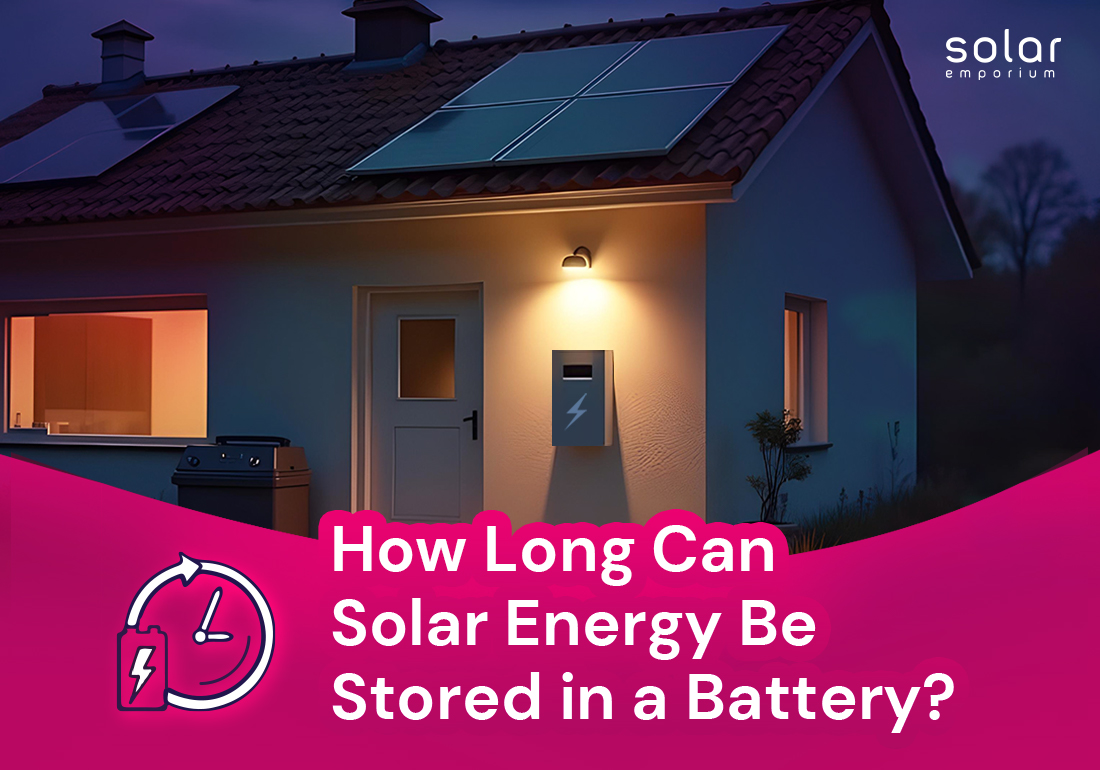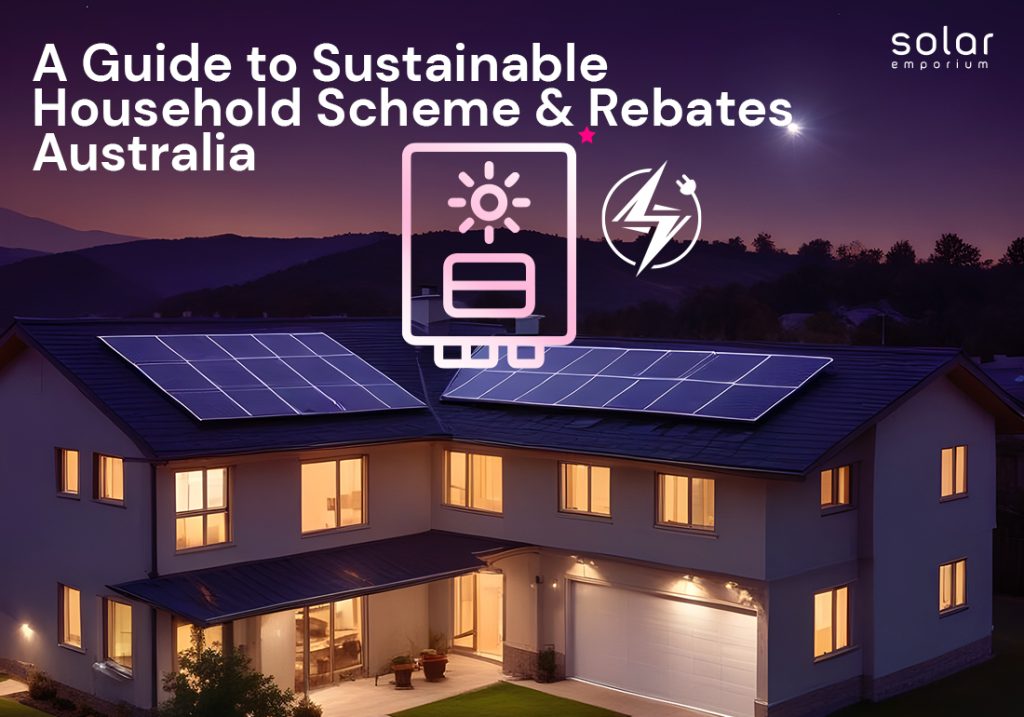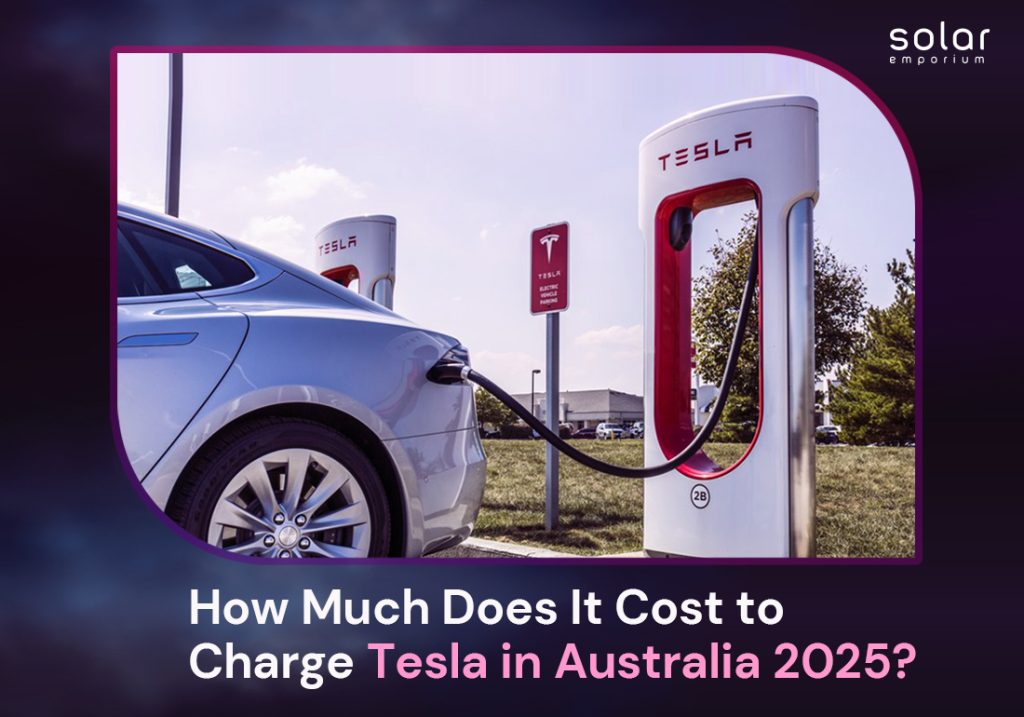Whether you’re looking to maximize the value of your solar energy, prepare for unexpected power outages, or simply reduce your electricity bills, understanding how long solar energy can be stored in a battery is key.
Solar batteries provide a smart way to capture and use the energy your panels generate.
Wondering how long can that energy stay stored before it’s used up?
In this blog, we’ll delve into the factors influencing battery storage duration and help you understand how to get the most out of your solar battery system.
So, tag along to know in detail!
Unlocking the Power of Solar Battery Storage: Key Insights for Australians
Solar energy storage is a process of storing energy generated by your solar panel for later usage when the production rate lowers during the evening or night.
Renewable energy sources like solar are intermittent; they only produce large amounts of energy under direct sun exposure.
Therefore, by storing this excess solar power in batteries, users can ensure a 24/7 uninterrupted electricity supply even if the sun isn’t out. Battery storage has become crucial for people who want to save money and enjoy energy freedom.
How Solar Battery Storage Works
By now, it’s clear that batteries can capture excess energy for later but how does a solar battery actually work? Let’s have a clear picture!
During the peak hours of the day, your solar panels generate massive electricity. In most cases, this energy is not fully required to power your home. So, what if your home is consuming less energy than your panels are producing?
Here comes the magic of solar battery storage! Excess power is sent to the battery instead of being wasted. These batteries function by storing electrical energy as chemical energy.
So, whether there is a grid power failure, the sun sets, or whenever energy demand is higher, this energy is converted back to electricity and distributed throughout your home.
Are All Solar Battery Types Equally Efficient? Find Your Right Fit!
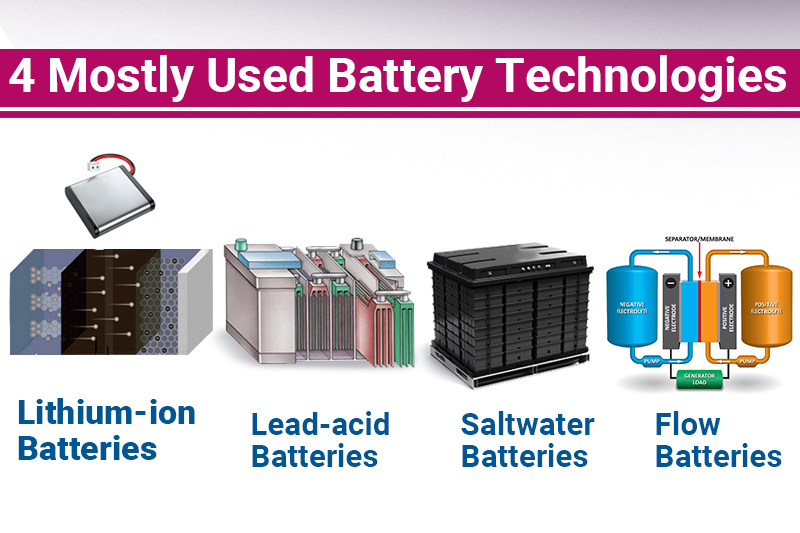
When exploring the various types of solar batteries in the Australian market, it’s easy to get lost in a sea of options. But let’s face it, not all of them deliver the performance or reliability you expect.
Far from it! While the best solar battery brand names can reassure you, they only tell part of the story. What truly sets the best apart from the rest is the battery chemistry they’re built on.
Some batteries might boast sleek designs or flashy marketing, but without the right chemistry, they’re nothing except a worthless expense.
So, let’s dig deeper into the 4 mostly used battery technologies that power the energy future:
Lithium-Ion Batteries
Lithium-ion batteries currently dominate the battery industry, electronics, EVs, and grid storage due to their high energy density, 85 to 95% efficiency, long cycle life, and fast charging times.
Some popular lithium-ion batteries in Australia include brands like Tesla Powerwall, LG Chem, Alpha Ess, and Sonnen.
Lead-Acid Batteries
Saltwater Batteries
These new technologies are gaining popularity because they use eco-friendly, non-toxic production materials in smaller or off-grid living systems.
However, their storage capacity and efficiency can vary between 60 to 75% and may not yet match the performance of lithium-ion batteries.
Flow Batteries
Looking for a promising option for larger solar energy systems? Consider trying Flow batteries. Though they are more expensive, space-demanding, and less efficient than lithium-ion batteries, they offer longer storage durations.
Using Solar Batteries Wisely: How Often Should You Use Them for Best Results?
Using solar batteries strategically is important to get the best out of it. For instance, rely on stored energy during peak demand times and avoid drawing energy from the grid in the evenings or cloudy days.
Discharging and recharging the battery regularly can help maintain its health, but avoid complete discharges to preserve its lifespan and maximize savings and efficiency.
However, remember the more often you charge and discharge your battery, the less time the charge will last after performing a certain cycle.
So, the battery usage procedure can be crucial to make your investment worthwhile.
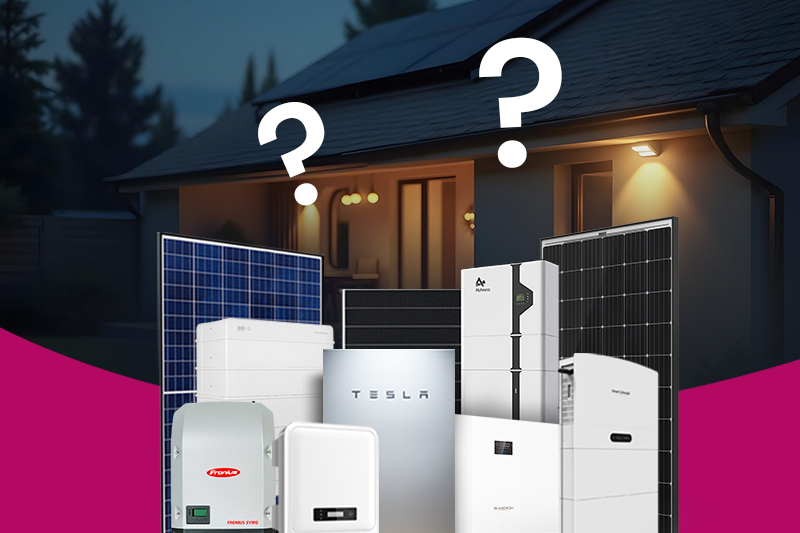
How Long Can a Solar Battery Hold a Charge?
The lifespan of a solar battery and how long it can hold a charge largely depend on factors including battery type, storage capacity, and the size of essential home devices.
Some solar batteries can hold a charge for a period ranging from a few hours to a full day. While the standard ones can store the charge for one to five days, ensuring your appliances keep running smoothly.
Residents often wonder how much power solar batteries can provide during an outage in Australia. Well, the answer isn’t as simple as you might think! Energy usage, battery capacity, and solar panel efficiency vary greatly.
On average, a 10 kWh battery can power a standard Australian home for about 10-12 hours, assuming moderate energy use. However, as we mentioned earlier, this varies from home to home.
For example, in some houses, the lights might stay on for hours, while in others, the power could drain out in minutes if you keep running high energy-consuming appliances like aircon, heat pumps, or oven.
Even charging multiple devices or using electric heaters can quickly deplete your battery, leaving you in the dark sooner than expected.
So, if you want to power larger appliances or an air conditioner, you’ll need a larger-capacity battery. Ultimately, it all depends on how much power you draw during the outage.
Are Solar Batteries Cost-Effective? Explore the Benefits
If you live in an area where power outages are frequent, you know that solar batteries can feel like a lifesaver. When the grid goes down, they become your silent hero, keeping your home powered when needed.
But that’s not the only blessing of solar battery it offers countless advantages.
Let’s have a closer look at how solar batteries bring environmental sustainability, economic feasibility, and energy resilience:
- Solar batteries reduce the electric costs for residents in Australia. Batteries ensure they depend less on the grid, supporting grid stability.
- Bring economic feasibility by offering jobs in industries like manufacturing, installation and research.
- Reduce fossil fuel dependency, lower global carbon footprints, and help to progress faster towards a sustainable energy future.
- Provides instant backup power during grid outages and ensures essential devices stay on without interruption.
- Increases energy freedom and self-sufficiency by storing solar energy for later use.
Even though solar batteries are an excellent investment for energy independence and sustainability, the initial cost can be a concern for many.
So, the burning question is: Is investing in solar battery storage economically viable? Is it worth it?
After reviewing all the long-term benefits, we hope the answer is “yes” for many Australians.
6 Key Factors that Affect Solar Battery’s Lifespan
Nobody wants to invest in something only for it to deteriorate quickly. Isn’t it? So, it’s wise to keep prior knowledge about what factors can affect the lifespan of a solar battery.
Here, we have listed some major factors that influence the lifespan of solar batteries:
1. Battery Chemistry
Think before you buy! Some batteries might cost less but don’t provide satisfactory performance.
Lithium-ion batteries are expensive but offer a lifespan of 10 to 15 years or longer, while lead-acid batteries cost less but last only 3 to 5 years.
2. Temperature
Batteries operate best in moderate temperatures. Extreme heat or cold can reduce their lifespan and efficiency.
That’s why many best solar batteries, like Tesla Powerwall are designed with built-in temperature regulation to keep the battery in optimal conditions.
3. Depth of Discharge (DoD)
4. Charge and Discharge Cycles
Every time a battery is charged and then discharged, it undergoes a cycle. A high number of cycles will gradually reduce the battery’s efficiency.
For example, a solar battery with 4,000 cycles will typically last about 10 years if cycled daily.
5. Maintenance and Usage Pattern
Regular monitoring and maintenance of the solar battery can prevent early degradation.
However, you can also check the top 10 solar battery maintenance tips for a more detailed understanding.
6. Quality of Installation
Enhance Your Solar Battery Storage Experience with These Expert Tips
- Choose a proper-sized battery that’s appropriate for your energy needs. A battery that’s too small may not provide enough backup power, while too large batteries can waste energy.
- Keep your battery and solar panels clean. Ensure regular maintenance and check for rust or any visible cracks.
- Try to follow time-of-use plans. Like in some regions, electricity providers offer plans where electricity prices vary based on demand.
- Charge your solar battery during off-peak hours when electricity usage is cheaper.
- Upgrade your Inverter as an advanced solar inverter can improve your overall system performance.
Cost-Saving Tips for Solar Battery Users
Though solar battery storage capacity is an investment, it can lead to significant savings in the long term.
There are a few ways to maximize savings, such as the self-consumption process of batteries reduces grid dependency and you also don’t need to purchase electricity.
You can also take advantage of various government and state-based rebates and incentives on solar batteries to reduce the high upfront costs of battery installation.
Moreover, you can Invest in energy-efficient appliances to lower your overall energy consumption. The less energy you use, the longer your solar battery will last and the more you can save.
Take the Leap to Solar Energy! Contact Solar Emporium Today!

Solar energy is growing rapidly in popularity across Australia, so now is the perfect time to invest in solar energy storage.
Solar battery storage can help you achieve your goals, whether you’re looking for backup power, reduced energy costs, or a more sustainable energy solution.
Ready to leap? Contact Solar Emporium today for expert advice, a tailored solar solution, and seamless installation of your solar battery system. Let us help you unlock the full potential of solar energy and achieve energy independence.
Harness the sun’s power, even when it’s not shining!
